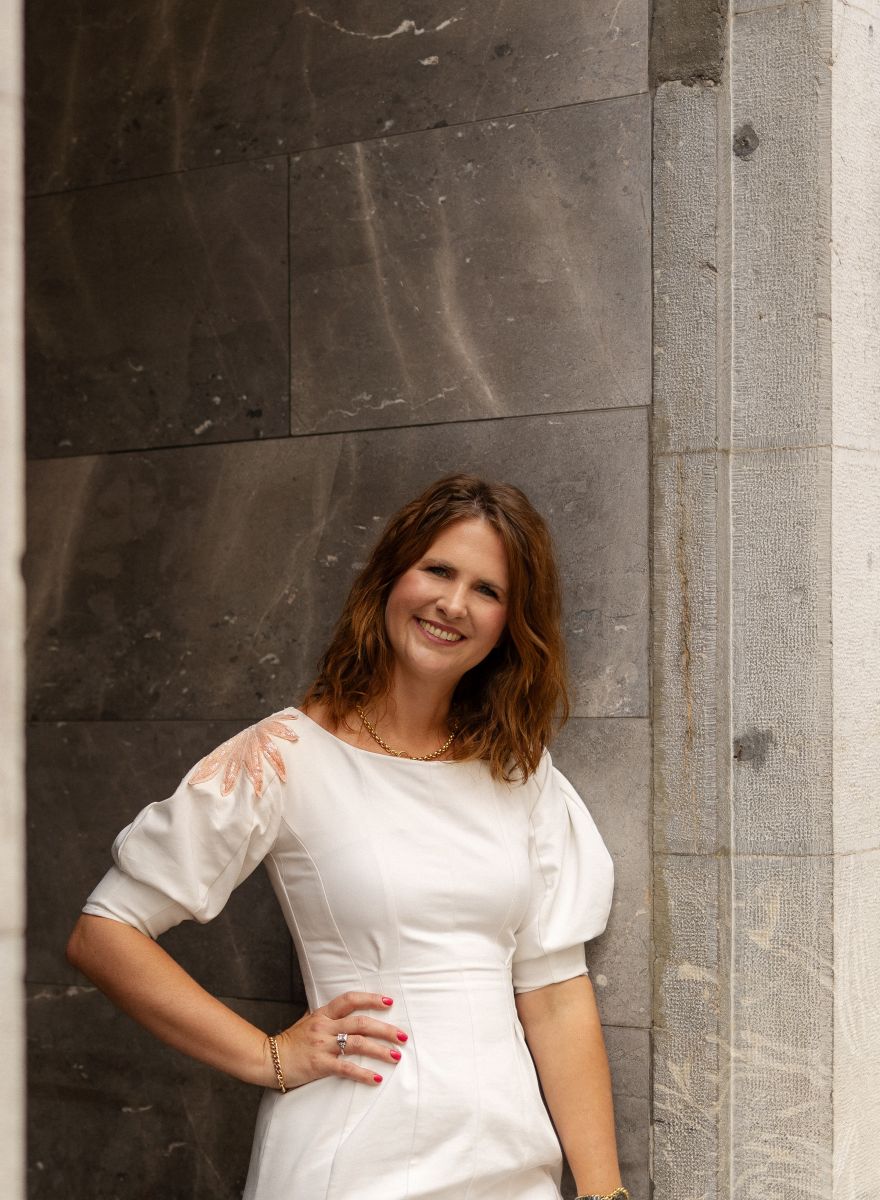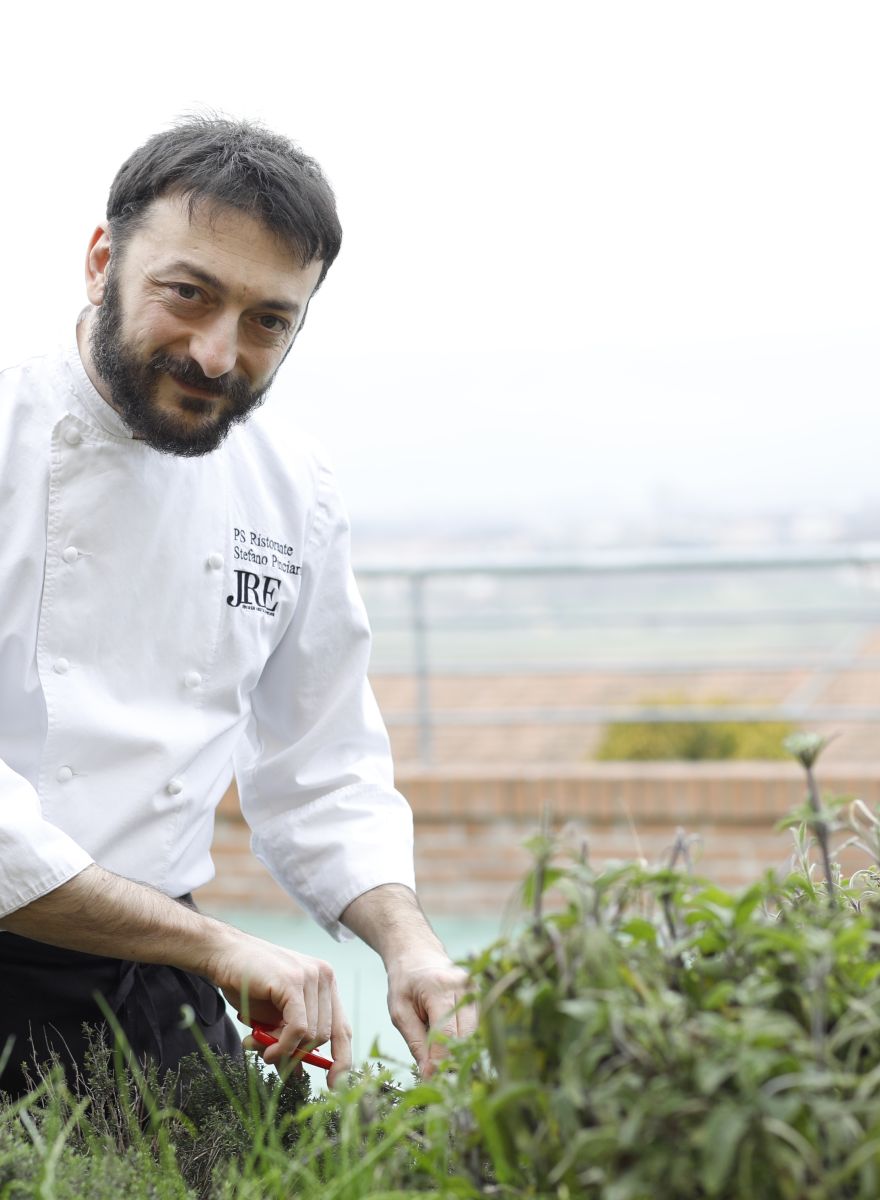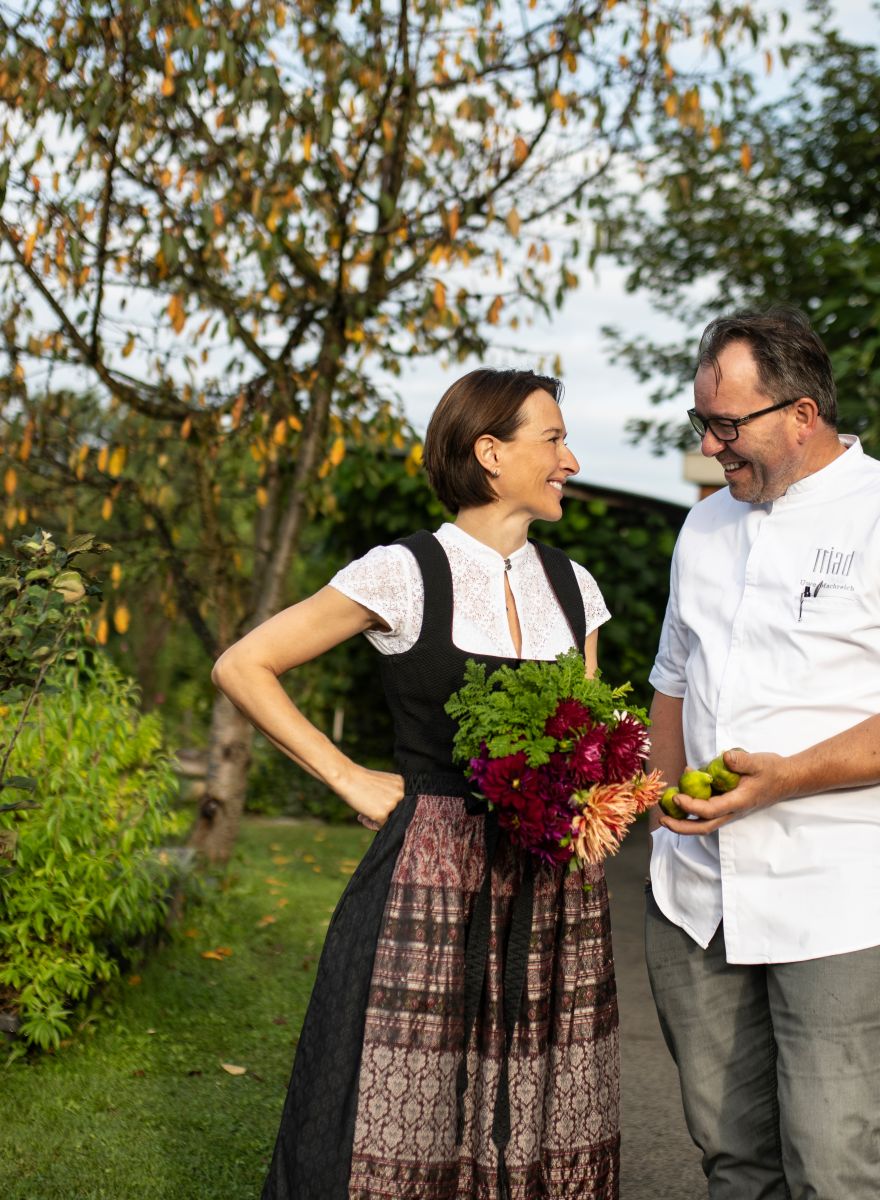Become a JRE-Inside+ member and enjoy exclusive benefits, inspiring interviews, recipes & articles, event infos and more.
- Always up to date with our world of fine dining
- Receive invites to exclusive events
- Get to know our Chefs through interviews and recipes
This article is for JRE-Inside+ members only
Go JRE-Inside+Interview with Ryan Blackburn - JRE Innovation Award 2024
Top chefs often let their dishes speak for themselves—every ingredient, technique, and presentation reflects their passion and philosophy. In this specific JRE member Interview, we go beyond the plate to celebrate our 2024 JRE award winner. Discover the story, inspiration, and dedication that earned him this recognition.
We got the opportunity to interview Ryan Blackburn, chef-owner of The Old Stamp House Ambleside, Cumbria, UK and The Schelly, Ambleside, Cumbria, UK.
Early inspirations
I was brought up in Great Langdale, a few miles from Ambleside. I’m the third generation of my family to work in hospitality. Much of my childhood was spent in and around the hospitality industry, my parents ran various businesses locally, which is why some of my earliest memories are of my dad cooking in the kitchens and that inevitably rubbed off. I don’t have any formal qualifications as a chef, but I did study business and management and that’s stood me in very good stead.
As well as that I’ve been fortunate to work in some amazing kitchens including Holbeck Ghyll back in the day and then I was fortunate to work alongside Martin Wishart during my time in Edinburgh. After that, I headed up the kitchen at The Cottage in the Wood, Whinlatter from 2011 to 2014, and during that time I was fortunate enough to get one or two stand-out reviews, including one memorable one from food critic Jay Rayner. Ultimately I was desperate to open my own place, which I did with my brother Craig in 2014, opening The Old Stamp House.
Over the years I’ve been lucky to have been recognised with several plaudits, but that said I’m constantly evolving and developing, always looking at how I can improve what I do, if I ever stopped, I don’t think I’d be a chef anymore.
It’s been a roller coaster since we opened The Old Stamp House, we were presented with our first Michelin star in October 2019, which we’ve successfully retained since. Alongside that restaurant has been named the Best Fine Dining Restaurant in the UK for three consecutive years in the Tripadvisor® Travellers' Choice® "Best of the Best" Restaurants awards, 2021 to 2023, and was also named number one in the world in both 2021 and 2022, and number three in the world in 2023.
In October 2020 we achieved three AA Rosettes for Culinary Excellence, and in 2023 the restaurant was named the AA’s Restaurant of the Year for England. We’ve also been listed among the UK’s top 100 restaurants by several guides including the National Restaurant Awards and the Harden’s Guide, as well as being awarded a rating of exceptional in 2023 by the Good Food Guide, which we successfully retained in 2024. The icing on the cake so far was being presented with the Innovation Award at the bi-annual JRE Chef’s Congress in Paris earlier this year.
Philosophy in the kitchen
I’m a born and bred Cumbrian. I’m proud of my heritage and despite what many people might think the region has a very strong food heritage and that’s something that I’ve actively researched.
I use Cumbria’s larder for inspiration, referencing the region’s food heritage, its people and culture along the way.
Essentially I want The Old Stamp House experience to be that of being in Cumbria, the whole story of this place – but not just a story about its past but also a story about the area's food future.
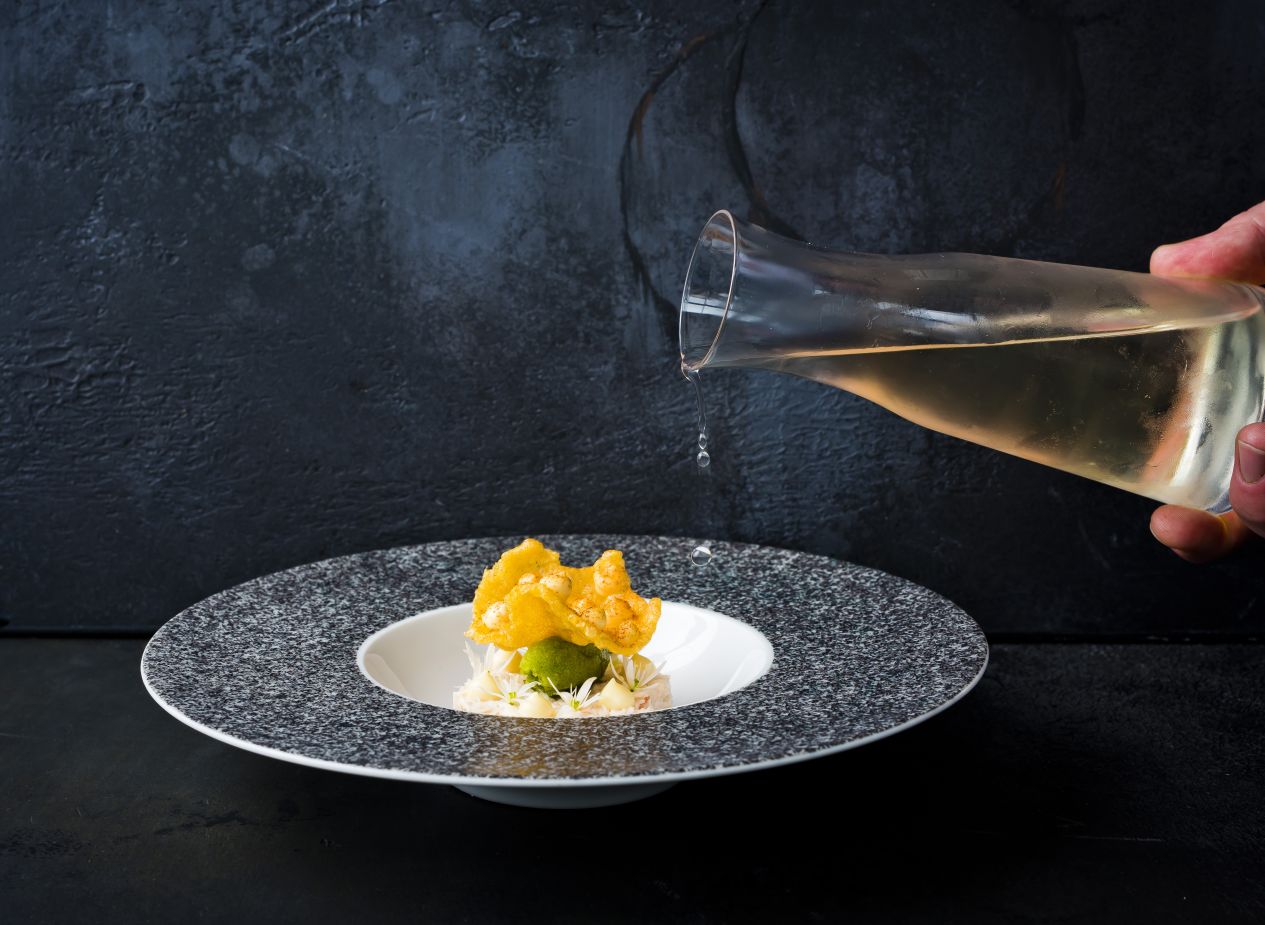
Crab, tomatoes from the north of Cumbria and wild garlic.
The story behind a Signature Dish
My whole life I’ve been surrounded by Herdwick sheep, growing up in Great Langdale and then Broughton Mills, you couldn’t ignore them; they were my constant neighbours.
When I was a pupil at Langdale Primary School I remember one of our school projects involved carving a Herdwick out of a large piece of slate that we were given by the local quarry. If you ever pass through Chapel Stile and fancy taking a look at our efforts, it’s still there in the corner of the playground, and I guess it will be there for a very long time to come!
You can see why I can honestly say that my upbringing and the connection with the landscape that provided, has made me into the chef that I am today, not only that it also makes a significant contribution to making the restaurant what it is too.
During my training at a Michelin-starred restaurant in Cumbria, nothing we used was local. Lamb and beef came from Scotland and pigeons came from France; it was all about the prestige of the ingredient. There was nothing wrong with that, it was the way it was back then, so gradually the connection with the environment from my youth began to fade.
Then when it was my turn to step up and become head chef for the first time, the first few menus I did I just wasn’t happy with. They weren’t bad; the customers were happy. But I was disappointed. To me they felt soulless; lacking in personality, to the point where I was beginning to feel a bit lost. I had all this training, loads of skill and knowledge but I had no idea what to do with it.
Then I went to visit my old friend, John Watson. I first met John and his then-wife Caroline when they moved into Yew Tree farm over 20 years ago. I went for a catch-up and to speak to them about the meat they had started supplying to some of the best restaurants all over the UK. Thanks to their hard work, ambition, and high standards, Cumbrian Herdwick was gaining a reputation with some of the best chefs in the country.
The problem was that to make it work they had to sell either the whole or half an animal, at that time the vast majority of chefs only wanted the prime cuts. I hadn’t used anything but saddle since my days at the Blacksmith’s Arms. But I was determined to make it work, it became a mission for me. It took me many attempts but eventually, I figured it out and made it work, the dish I developed is the single most important thing I have done in my career as a chef. It’s why I was first noticed as a chef. Jay Raynor’s review of the dish I created at the Cottage in the Wood, is what put me on the culinary radar.
I believe that I have earned a Michelin star because of that dish, it’s the reason people have travelled from all over the world to eat at the restaurant and it's why I have met HRH His Majesty The King (then Prince Charles), and also had the opportunity to serve Herdwick at the Houses of Parliament.
The principle of finding the ingredient and then producing a dish using that ingredient is the exact opposite of the normal run of things. Ordinarily, you would produce a dish and then find the ingredients to fit. This was a very different way of working and is now how I operate as a chef, it defines my food, and it’s all down to the faithful old Herdwick. At the end of the day, ideas and principles are great but if the ingredients aren’t good enough then the dish will simply be a nonstarter, and that’s down to the producer and suppliers.
I’m lucky with John at Yew Tree Farm, in that he is both the producer and the supplier. There are very few chefs fortunate enough to have a supplier as good as he is. John is involved from start to finish, overseeing breeding and lambing, managing the lamb’s upbringing, and then the dropping off and collection from Airey’s abattoir, followed by the ageing and butchery of the final cuts of meat. All I have to do is drive to the farm and collect it. The care, effort, knowledge, and dedication that John shows his Herdwicks; as both an animal and a product, is what makes his Herdwick superior to many others in both taste and quality and why it’s such an important part of my menu development.
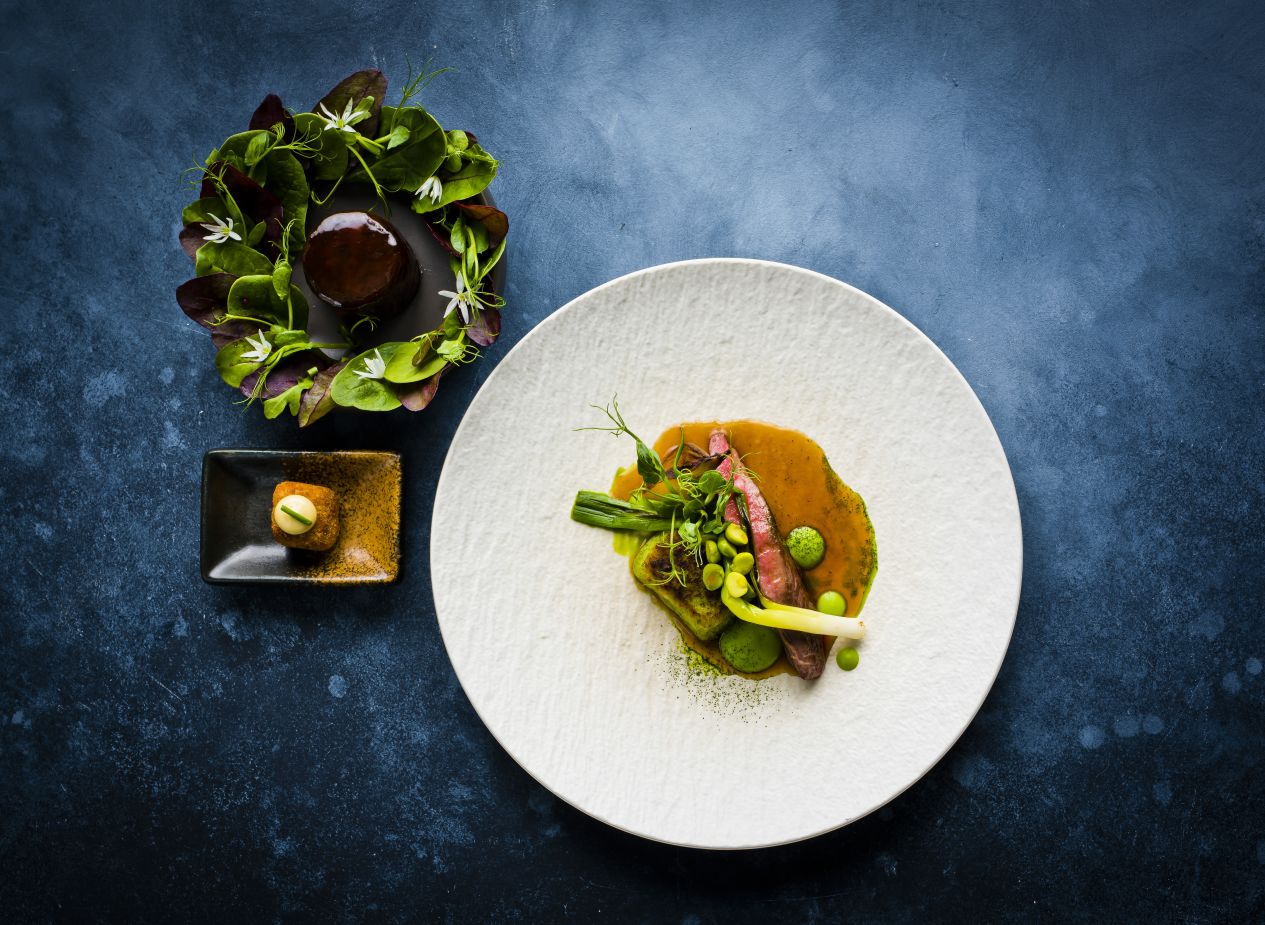
Old Stamp House Dish - Yew Tree Farm Herdwick Hogget (photo credit Bacon on the Beech)
The Essence of Old Stamp House
Cumbria has a fascinating food heritage thanks largely to its people, its landscape and a little-known aspect, its coastline. In particular, the ports of Whitehaven and Maryport brought the world to the Lakes. Maryport was the birthplace of Thomas Henry Ismay who sometime later went on to own the White Star Line, which operated the Titanic, and sister ships Britannic and Olympic.
As the trade in herbs and spices became more and more prevalent, and these once luxury items became more readily available the old counties of Cumberland and Westmorland developed an array of unique foods. Delicacies include the likes of Westmorland Pepper Bread, Westmorland Apple Tansy, Grasmere Gingerbread, spiced Cumberland Sausage and Cumberland Rum Nicky, all of which feature various imported spices, sugar, molasses or rum and some cases all of them!
Man has played a significant part in shaping the 13 valleys of the Lake District, its coasts, and mountainous uplands for over 10,000 years. As you might expect this dramatically rugged landscape has inevitably dictated the very nature of farming. The rich coastal plains of the Solway are perfect for dairy cattle, the rugged high fells ideal for the iconic hardy Herdwick sheep breed and act as a haven to an abundance of game in the form of partridge, venison, and rabbit.
The windswept Irish sea coast yields an abundance of seasonal fish and seafood, with sea bass, crab, langoustine, lobster, and brown shrimp available from the Solway to the north and vast expanses of Morecambe Bay to the south, whilst the coastal shores reveal a riot of forageable herbs and flowers.
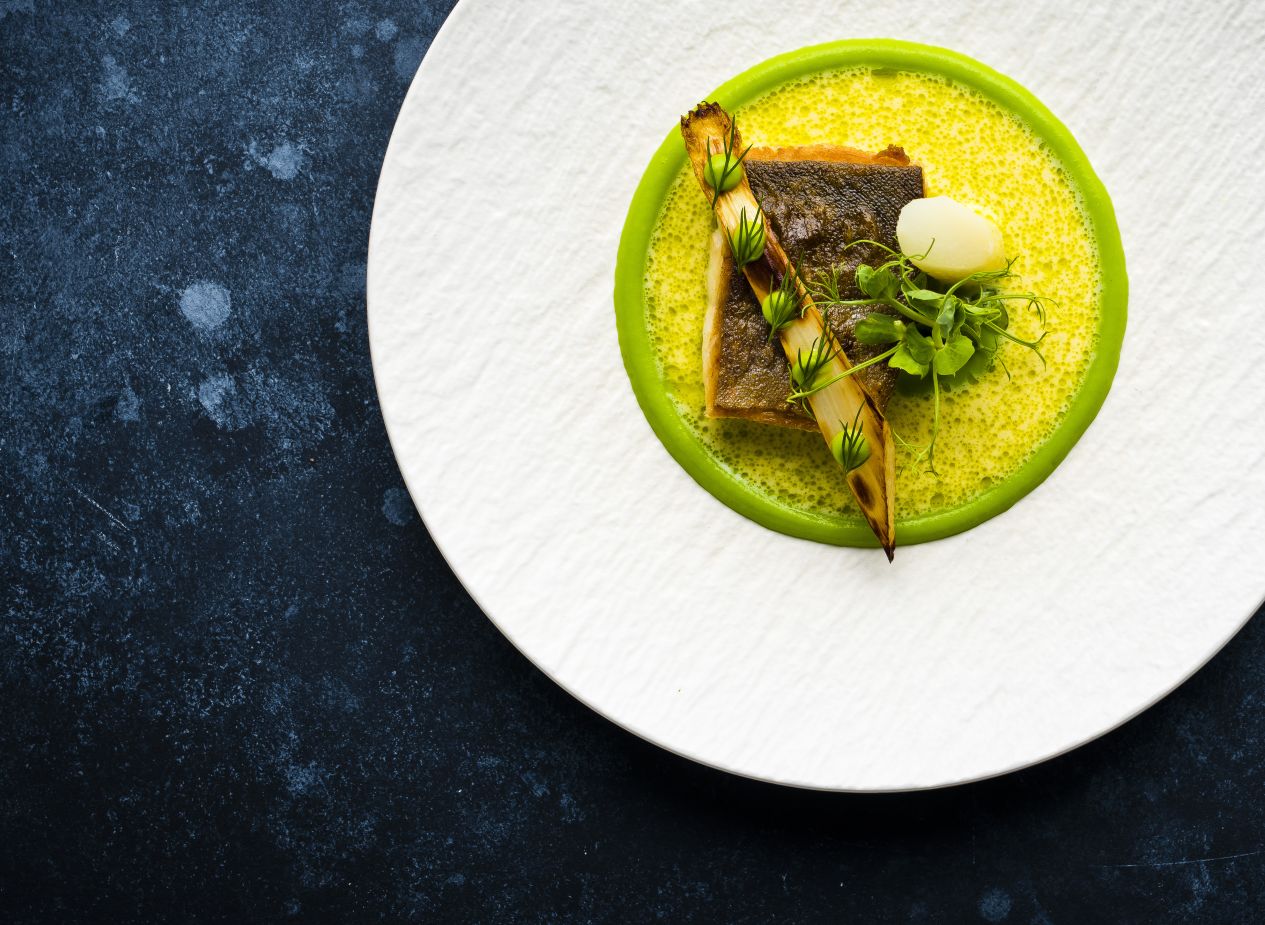
Artic charr, fermented white asparagus, peas and dill
The wooded river valleys offer up trout, pheasant and deer, the lakes provide pike and charr, and the ancient woods and hedgerows provide an abundance of mushrooms, nuts, berries, herbs, and flowers.
This rich larder shaped over thousands of years by nature and the hand of man provides the team with all manner of inspiration. A fact reflected in the seasonal menus we serve, with each dish paying homage to the region’s rich food heritage, its people, and its diverse cultural heritage.
But that’s not all the building in which the restaurant sits has historical connections too, and certainly makes it pretty unique once you know the story you’ll begin to understand why the restaurant is called The Old Stamp House. It transpires that it was the office of the world-famous Romantic Poet William Wordsworth, who as well as writing poetry had out of necessity had to supplement his income as a local tax collector. Wordsworth was appointed as Distributor of Stamps for Westmorland in 1813, for which he received an annual salary of £400. During his tenure, he was responsible for a variety of excise taxes but resigned when he was appointed Poet Laureate in 1842.
Advice for Aspiring Chefs
Quite simply take the time to learn as much as you can in as many sections as you can. It’s essential you work hard, nothing comes easily and above listen and get fully involved in the day-to-day as much as possible, that way you’ll hone your skills and in the future will be able to share that knowledge and mentor the next generation, which in itself is hugely important for the future of the industry.
Inevitably you’ll make mistakes along the way, we all do, but as long as you learn from them you’ll grow both as a chef and as an individual and be better for that learning process.
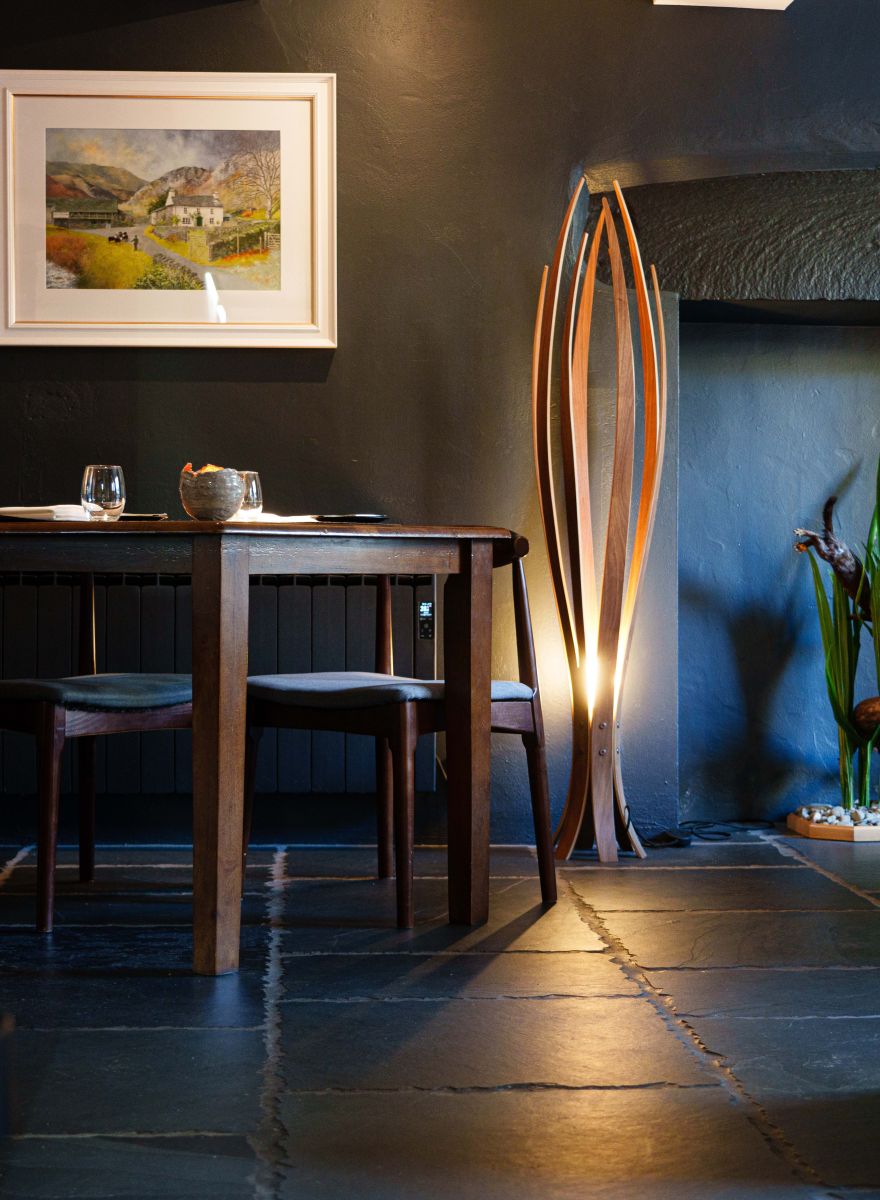

What does winning the JRE 2024 Award mean to you and your team?
Winning the innovation award has been a particular highlight for us all. It recognises why we do what we do and the work we’ve all put into creating a seasonal menu that reflects the county in which we are lucky enough to operate. Everything we do is influenced by our cultural heritage, the producers we work with and the provender of this region. We’ve taken a highly innovative approach to telling the story of this place, its people, its terroir, and its landscapes all of which are deeply entwined in what we do and encourage us to strive to tell the story of this place through its food.


Photo credits: Phil Rigby Photography | Bacon On The Beech.



